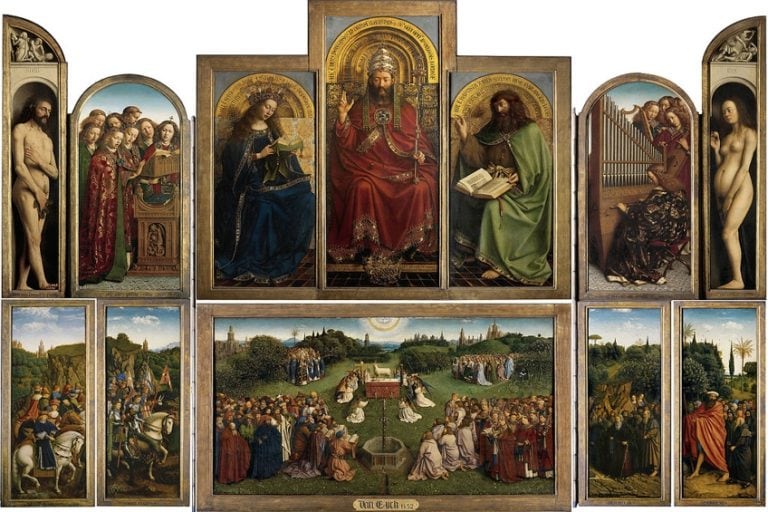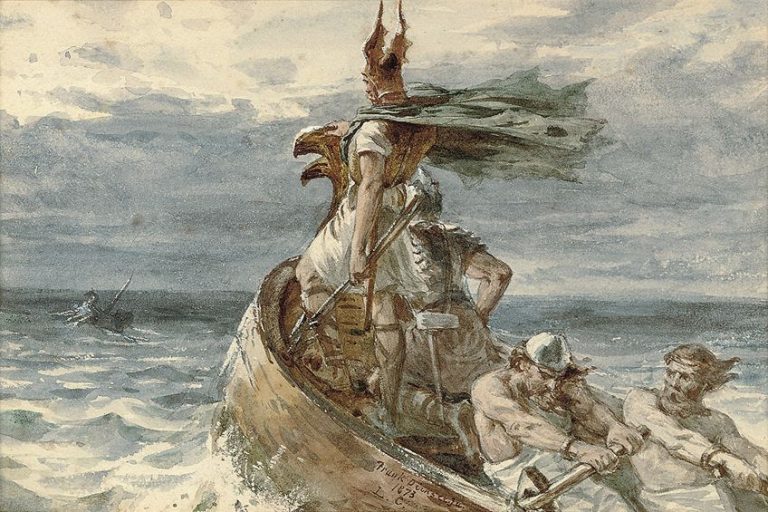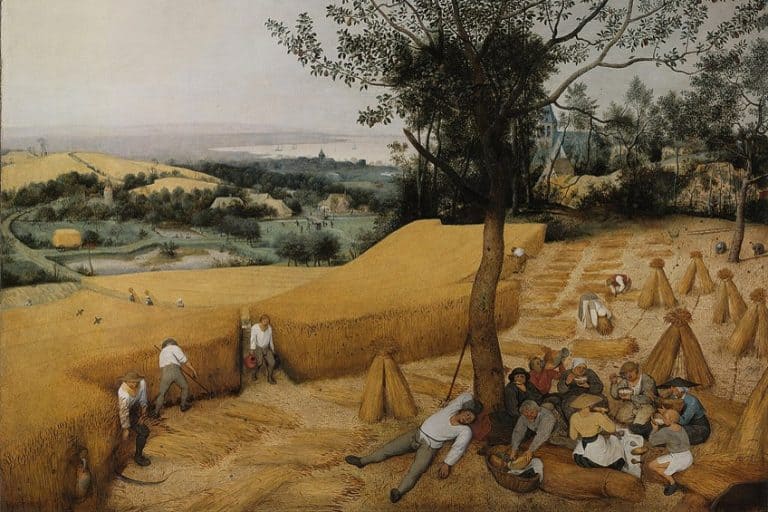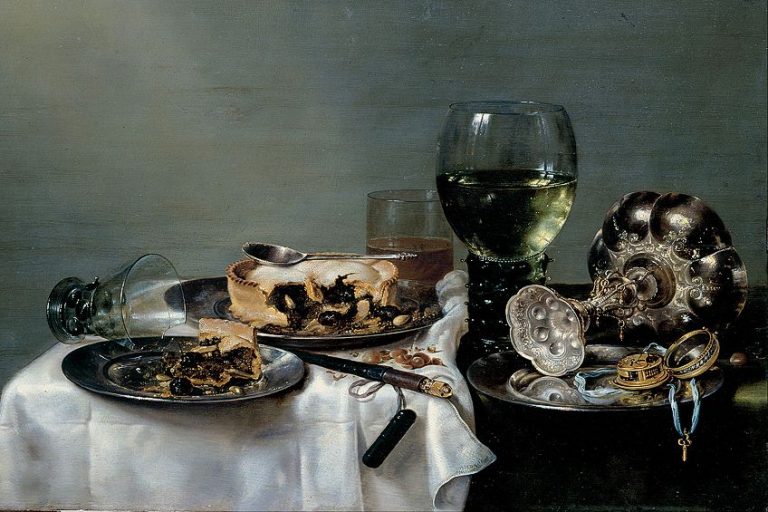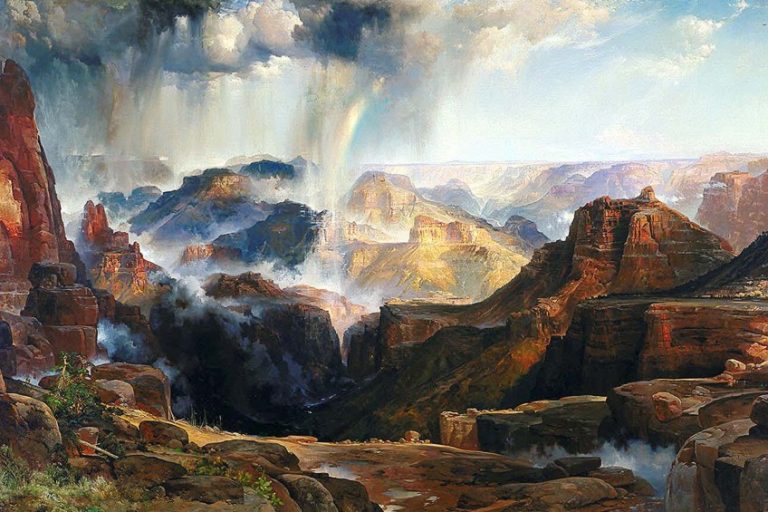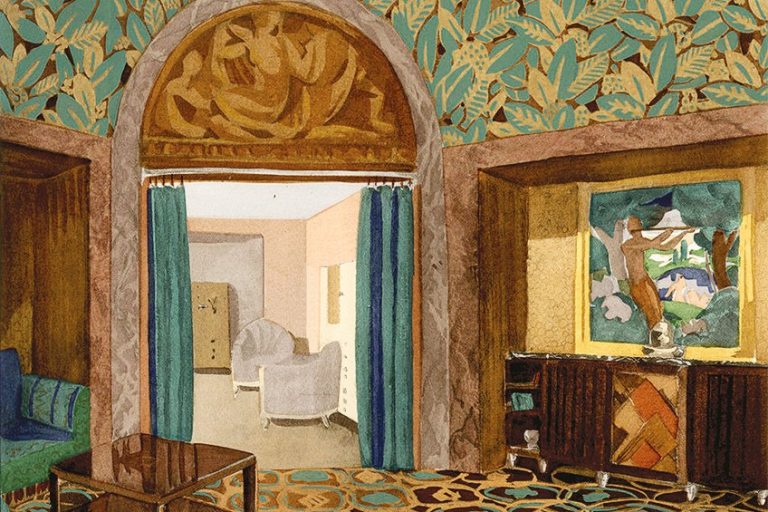Hindu Art – Discover Religious Sculptures, Paintings, and More
Hindu art, a vibrant and multifaceted expression of one of the world’s oldest living religions, encapsulates a rich tapestry of spiritual beliefs, cultural traditions, and artistic innovation. Rooted in the ancient civilizations of the Indian subcontinent, Hindu art encompasses a breathtaking array of sculptures, paintings, architecture, and rituals that span millennia. From the intricate carvings of temple complexes to the colorful depictions of gods and goddesses adorning sacred texts, Hindu art serves not only as a visual feast for the senses but also as a profound reflection of the diverse philosophical and mythological dimensions of Hinduism. Through its symbolism, iconography, and regional variations, Hindu art invites viewers on a journey through time, offering glimpses into the spiritual aspirations, social customs, and artistic ingenuity of a vibrant and enduring cultural heritage.
Key Takeaways
- Hindu art represents a broad spectrum of styles tied to the cultural practices of Hinduism.
- It has a historical tapestry that evolves with spiritual and societal shifts.
- Hindu art encompasses multiple forms, from architecture to paintings, reflecting the diversity of Hindu culture.
What Is Hindu Art?
Hindu art is as intricate and diverse as the philosophies and teachings of Hinduism itself, deeply woven into the cultural fabric of India. It is a term that spans a wide array of artistic traditions and styles, all culturally connected to Hinduism, the predominant religion of the Indian subcontinent. Rooted in spiritual practice, Hindu art often holds religious significance, depicting Hindu deities, mythological narratives, and rituals with reverence and symbolism.
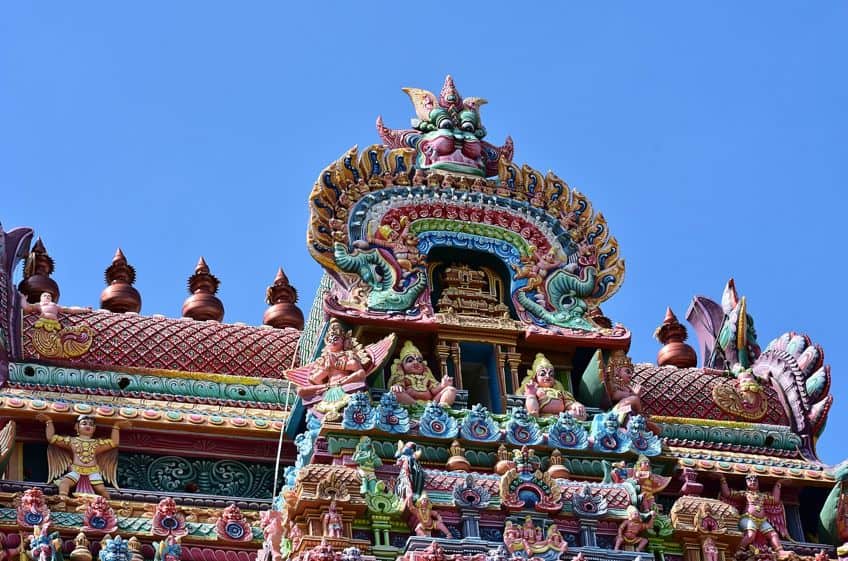
Its forms are manifold, ranging from the vibrant paintings that grace the walls of temples to the exquisite sculptures that stand as a testament to the craftsmanship of ancient artisans. This multifaceted exhibition of human creativity has evolved over millennia, reflecting the dynamic nature of Hindu beliefs and societal changes within its vast timeline. Hindu art is not a static tradition; it has responded to various cultural, political, and religious influences, adapting and incorporating elements from different eras and regions.
The presence of Hindu art can be seen across different mediums, including architecture, sculpture, painting, and performance arts, each medium offering a unique lens through which the spiritual and historical richness of Hinduism can be appreciated.
Characteristics of Hindu Art
Characteristics of Hindu art often include intricate symbolism, vibrant colors, rich mythological narratives, and a profound connection to spiritual and religious traditions.
- Symbolic representation: Hindu deities and mythological scenes are central, often depicted with multiple heads or arms to symbolize their divine powers and attributes.
- Iconography: Intricate symbolism plays a vital role, with each deity having specific attributes, vehicles (vahanas), and weapons.
- Purpose: Created for worship, contemplation, or to convey religious teachings and stories.
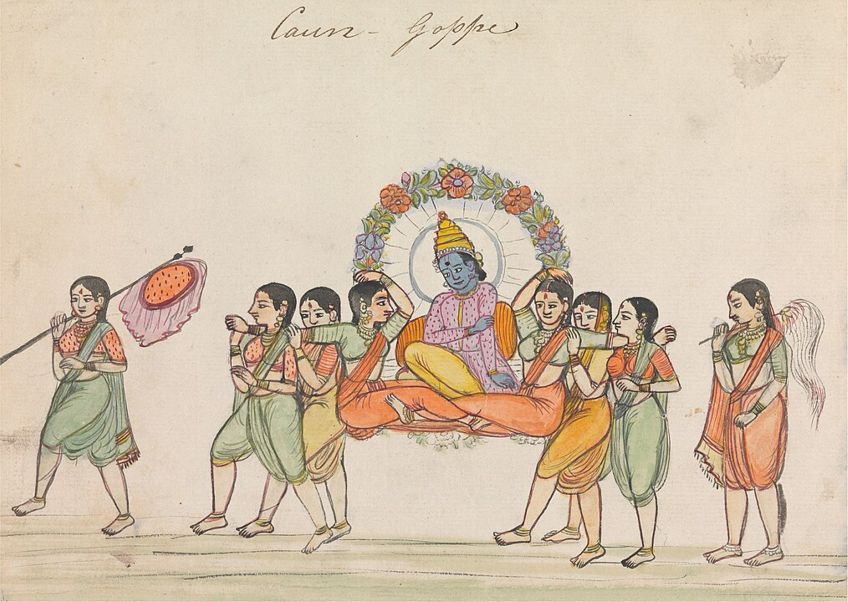
Materials and Techniques Used
Materials and techniques used in Hindu art encompass a diverse range, including stone carving, bronze casting, wood carving, painting with natural pigments, intricate textile work, and the incorporation of precious metals, reflecting the artistic ingenuity and craftsmanship inherent in the tradition.
- Sculpture: Usually crafted in stone, metal, or wood, reflecting various postures (asanas) and gestures (mudras).
- Painting: Incorporates vibrant colors and is found in a variety of styles across different regions.
- Textiles: Includes detailed embroidery and weaving, often with religious motifs.
Hindu artworks offer more than aesthetic appeal; they serve as aids in the meditation and worship of the divine.
Artists who create these works often do so with spiritual reverence, infusing their pieces with a sense of the sacred.
Popular Motifs in Hindu Art
Popular motifs in Hindu art include representations of gods and goddesses such as Vishnu, Shiva, and Devi, as well as mythical creatures like the Garuda and Naga, lotus flowers, mandalas, yantras, and depictions of epic narratives from texts like the Ramayana and Mahabharata, all of which symbolize aspects of cosmology, devotion, and spiritual enlightenment within Hinduism.
- Lotus flower: Symbolizing purity and beauty.
- Swastika: Representing good fortune and well-being.
- Om: The sacred sound and spiritual icon in Hinduism.
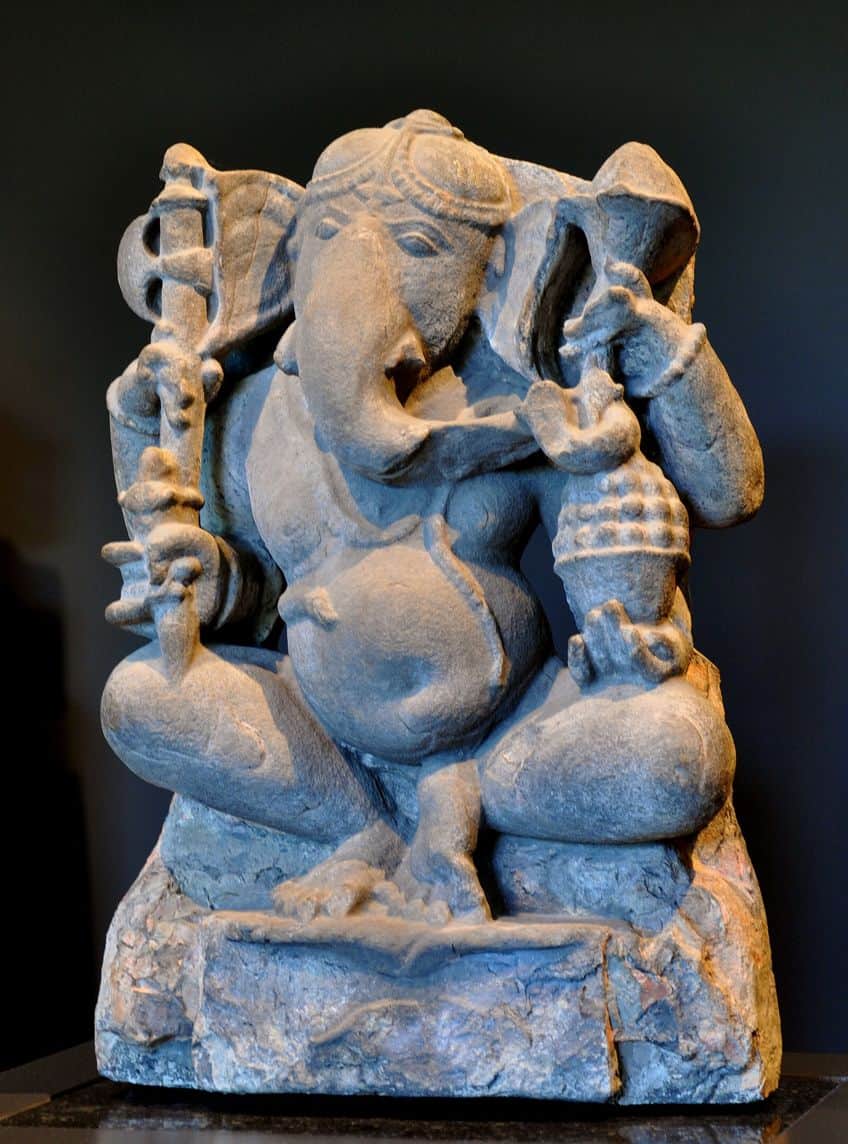
The art is not static and has evolved significantly over time, adapting to various cultural and historical contexts while retaining its deep-rooted spiritual significance. Those who engage with Hindu art are often not just viewers but participants in an ongoing religious tradition.
Origins and Evolution of Hindu Art
Hindu art manifests a deep interconnection with the subcontinent’s religious and cultural developments, evolving from ancient traditions and adapting through various historical periods and regional influences.
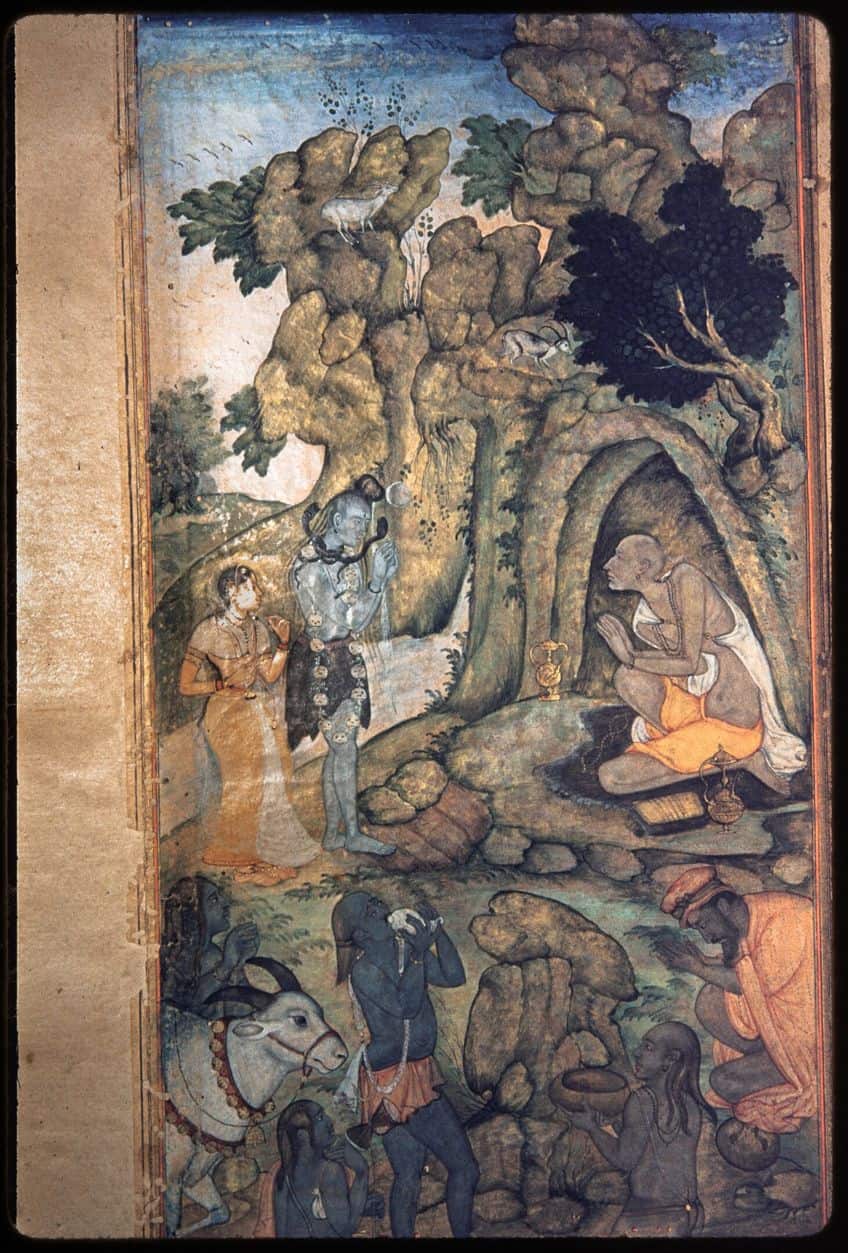
Indus Valley to Vedic Period
The origins of Hindu art are rooted in the civilization of the Indus Valley, dating back to the 3rd millennium BCE. This era showcased urban planning and utilitarian craftsmanship, with little evidence of monumental art typically associated with later Hindu traditions. As this civilization declined, the Indo-Europeans, known as Aryans, migrated and introduced the Vedas.
These sacred texts included hymns praising deities embodying natural elements, and laid foundations for Brahmanism that eventually shaped early Hindu art.
Buddhism Influence and Gupta Period
During the Gupta Period (4th to 6th century CE), Hindu art experienced significant transformation, influenced by the emergence and spread of Buddhism. The synthesis of Brahmanical practices with Buddhist iconography led to the creation of new art forms. Gupta architecture and sculpture stand out for their refined elegance and are considered a classical pinnacle. It is during this time that the imagery associated with Hindu gods and temples began to crystallize, drawing from epics and Hindu temple architectural styles.

Regional Variations and Modern Transformations
As Hinduism expanded across the Indian subcontinent, regional variations of art emerged, reflecting local customs, materials, and climate. South Indian Dravidian architecture, with its towering gopurams, contrasted with the North Indian Nagara style, demonstrating regional diversity. The narrative and symbolic depth of Hindu epics like the Ramayana and Mahabharata found expression in various mediums, influencing local art traditions.
Modern transformations have seen Hindu art adapt to new mediums and contexts, yet it retains its intrinsic religious and philosophical underpinnings.
Spirituality and Iconography
In the intricate tapestry of Hindu art, the elements of spirituality and iconography intertwine to depict the rich cultural and religious narratives. This melding of divine representations and symbols defines the aesthetic and spiritual landscape of Hinduism.

Deities and Symbols
Hindu art portrays a vast pantheon of deities, each symbolizing various aspects of life and the universe. A prime example is Shiva, often depicted as the Shiva Linga, which represents the foundational energies of the universe. Goddess Shakti embodies feminine energy, frequently illustrated with multiple arms, signifying her numerous abilities.
The lotus flower is used extensively across Hindu iconography, symbolizing purity and spiritual awakening.
- Vishnu: Depicted preserving the world’s righteousness, usually accompanied by symbols like the conch or lotus.
- Shiva: As an object of linga worship, the Shiva Linga is an abstract representation of creation and destruction.
Temples and Sculpture
Hindu temples and sculptures serve as vessels of worship and gateways to divine connection. Temples feature grand architectural designs, constructed to align with the universe’s cosmic principles. Within these sanctuaries, the murti, or sacred image of a deity, becomes the focal point of veneration. The sculptures range from large, life-sized representations of deities to smaller, more intimate pieces used in personal worship.
- Architecture: Intricately carved pillars and vimanas are testament to the importance of temples in Hindu spirituality.
- Murtis: Crafted following detailed scriptural guidelines to evoke the deity’s presence and command respect.

Rituals and Practices
Hindu rituals and practices within art are centered on the pursuit of spiritual salvation and righteous living. Worship, or puja, is performed daily in temples, with specific rites dedicated to various deities.
The combination of tangible art forms and intangible religious ceremonies creates a cohesive spiritual experience.
- Worship: Involves offerings to murtis, prayers, and chants, often conducted before intricate alterpieces.
- Yoni: Symbolic of the goddess Shakti, the yoni often accompanies the Shiva Linga, reinforcing the unity of male and female principles.
Importance of Hindu Art
Hindu art occupies a central role in reflecting and shaping the cultural and religious identity of Hindu society. It serves as a tangible expression of the vast and diverse philosophical traditions of Hinduism. Iconography in Hindu art is rich and complex, featuring deities such as Vishnu, Shiva, and Shakti, each symbolizing different aspects and philosophies within the religion.
Traditions and Symbolism: Hindu artworks are not mere decorations; they are imbued with deep symbolic meanings and are often used in rituals and worship. The art acts as a medium to convey religious principles, myths, and the narratives of sacred texts to the masses. Through sculpture, painting, and architecture, stories are told and lessons are imparted, keeping the traditions alive.
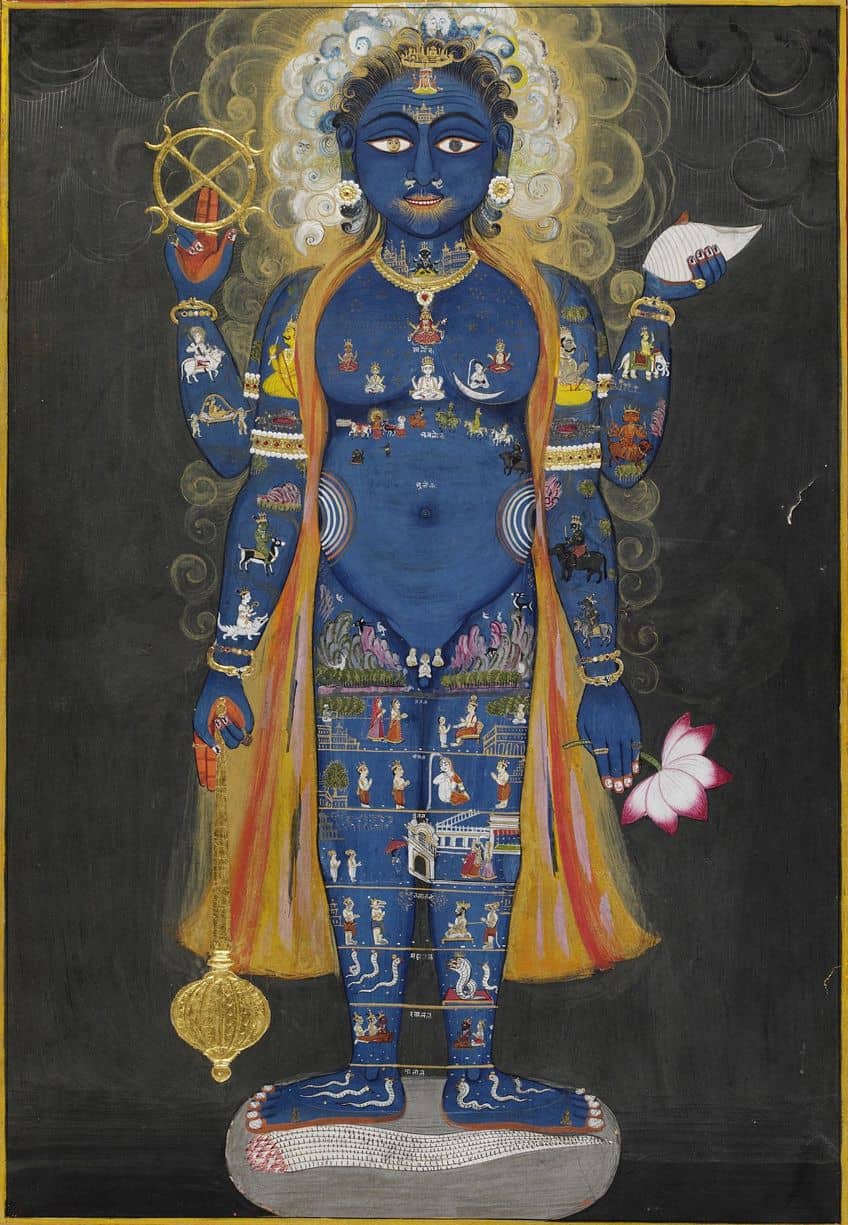
Cultural Continuity: Hindu art contributes significantly to the continuity of Hindu culture. Sculpture and painting, for instance, preserve the visual portrayal of myths that have been passed down for centuries. Artifacts from different historical periods provide insights into the evolution of practices and beliefs over time.
Diversity and Unity: These artistic forms are diverse yet consistent in their purpose of reflecting religious devotion. They commonly feature motifs and patterns that signify unity among the multiple expressions of the divine in Hinduism. The deity manifestations or devas are represented in various art forms, symbolizing the singular supreme entity they embody. Educational Aspect: For educators and practitioners alike, Hindu art is an indispensable resource in imparting knowledge about the religion’s history, values, and philosophies.
Through engaging with these artworks, one can gain a nuanced understanding of Hinduism as more than a religion—it is a way of life that interweaves art with the spiritual.
Impact and Legacy
The legacy of Hindu art is woven into the fabric of contemporary culture, reflecting a history rich with spiritual and artistic expression. It continues to influence modern art forms and maintains a vibrant presence in today’s society.

Hindu Art Today
Hindu art has profoundly influenced current artistic expressions, serving as a source of inspiration for artists and designers globally. Its vivid colors, intricate details, and spiritual themes resonate deeply within modern art communities. Hindu art today continues to evolve and adapt, blending traditional motifs and techniques with contemporary artistic expressions and mediums.
From vibrant street murals to intricately crafted sculptures in modern temples, Hindu art serves as a dynamic reflection of cultural identity, religious devotion, and artistic innovation in the contemporary world.
- Cultural connection: The narratives and iconography of Hindu art enable a bridge between diverse cultures, facilitating a richer understanding and appreciation of Eastern philosophical and artistic traditions.
- Design and decor: In home design, Hindu art manifests through various media, including sculptures and paintings of deities like Krishna and Vishnu, which remain popular for their aesthetic and spiritual value.
- Fashion and media: Elements of Hindu art permeate fashion designs and media, introducing traditional motifs and mythological themes to wider audiences, often in stylized adaptations.
- Public spaces: Statues and artwork inspired by Hindu mythology can frequently be seen adorning public spaces and community centers, creating a platform for cultural dialogue and reflection.
What Are the Defining Features of Ancient Hindu Art?
Ancient Hindu art is marked by intricate symbolism, religious motifs linking to deities, and a strong connection to Hindu scriptures and rituals. It is characterized by a rich use of color, elaborate ornamentation, and the portrayal of figures with multiple arms, heads, and other divine attributes to reflect the omnipotence and multifaceted nature of Hindu gods.
How Do Hindu Art Motifs Differ from Those in Buddhist Art?
Hindu art motifs often depict deities, mythological narratives, and symbols, such as the lotus and swastika, which are associated with auspiciousness and spirituality. Unlike Buddhist art which frequently highlights the life and teachings of Buddha, Hindu art represents a vast pantheon of gods like Vishnu, Shiva, and goddesses like Devi in various forms. Moreover, Hindu motifs include specific symbols that are central to its worship and philosophy, like the ‘Om’ symbol, which signifies the essence of the ultimate reality, consciousness or Atman.
What Are Some Notable Examples of Modern Hindu Art?
Modern Hindu art includes a diverse range of mediums, from paintings to digital art. Notable examples include the works of Raja Ravi Varma, who blended European techniques with Indian subjects, depicting Hindu gods and goddess in a more naturalistic style. Additionally, contemporary Hindu art can merge traditional themes with current issues, making it a dynamic and evolving form of artistic expression that resonates with the global Hindu community.
Isabella studied at the University of Cape Town in South Africa and graduated with a Bachelor of Arts majoring in English Literature & Language and Psychology. Throughout her undergraduate years, she took Art History as an additional subject and absolutely loved it. Building on from her art history knowledge that began in high school, art has always been a particular area of fascination for her. From learning about artworks previously unknown to her, or sharpening her existing understanding of specific works, the ability to continue learning within this interesting sphere excites her greatly.
Her focal points of interest in art history encompass profiling specific artists and art movements, as it is these areas where she is able to really dig deep into the rich narrative of the art world. Additionally, she particularly enjoys exploring the different artistic styles of the 20th century, as well as the important impact that female artists have had on the development of art history.
Learn more about Isabella Meyer and the Art in Context Team.
Cite this Article
Isabella, Meyer, “Hindu Art – Discover Religious Sculptures, Paintings, and More.” Art in Context. March 6, 2024. URL: https://artincontext.org/hindu-art/
Meyer, I. (2024, 6 March). Hindu Art – Discover Religious Sculptures, Paintings, and More. Art in Context. https://artincontext.org/hindu-art/
Meyer, Isabella. “Hindu Art – Discover Religious Sculptures, Paintings, and More.” Art in Context, March 6, 2024. https://artincontext.org/hindu-art/.




